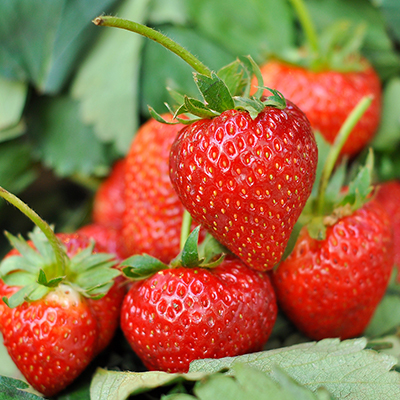How to Grow Pears
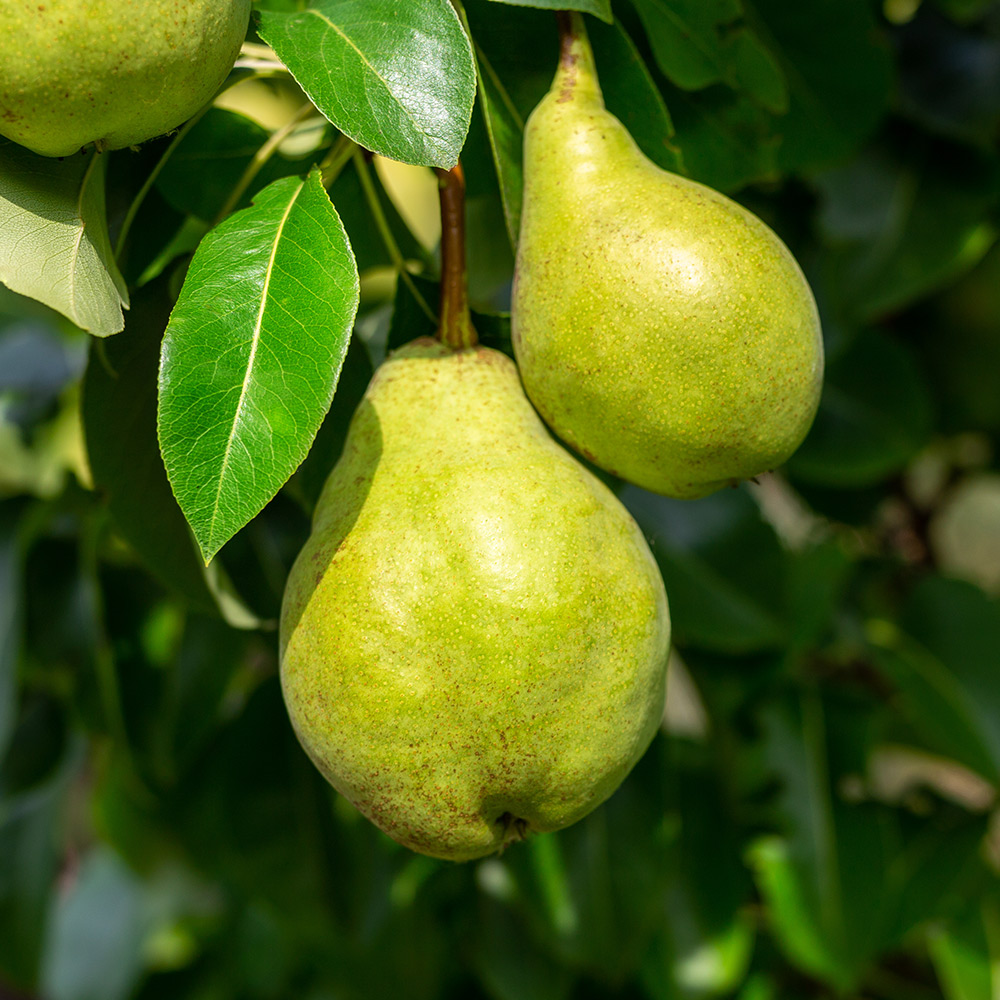
Last updated September 7, 2023
Juicy pears picked from your backyard garden are delicious when eaten fresh, baked into pies, muffins and fruit crisps. They’re also a tasty treat as pear butter or jam. Pear trees are relatively easy to grow and winter-hardy in garden zones 3 to 10. Some varieties are suitable for growing in small spaces and containers.
Use this guide to learn how to grow pears in your own backyard.
Difficulty:
Beginner
Duration:
Over 1 day
Table of Contents
Types of Pear Trees
What to Know About Planting Pear Trees
How to Plant a Pear Tree
How to Grow Pear Trees from Seeds
Pear Tree Pruning
Pear Tree Diseases and Pests
Types of Pear Trees
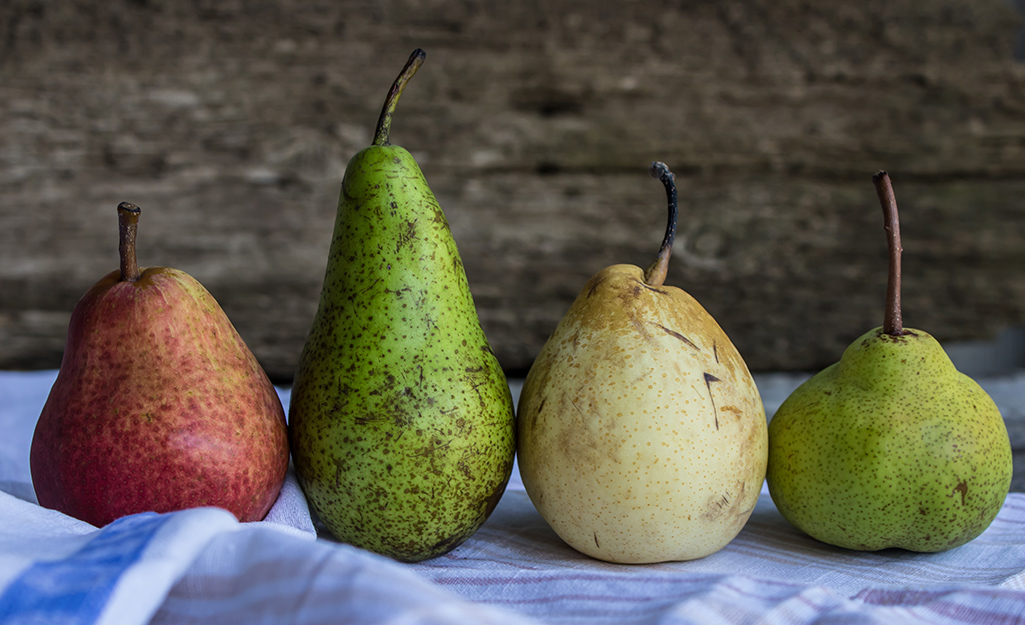
There are over 3,000 varieties of pears grown around the world. The pear tree is native to coastal and temperate regions of Asia, North Africa and Europe. There are three main species: the European pear, the Asian pear and the hybrid Chinese white pear.
Thousands of cultivars come from these three species. Cultivars are plants that are bred from a parent plant because it has desirable traits. Most pears sold in grocery stores are European varieties like Bartlett, D’Anjou and Bosc.
Some species are used as rootstock for grafting and for decoration. Most nursery pear trees are grown by grafting a clipping from a cultivar onto rootstock. The rootstock can be a different pear tree variety or a quince tree. Pears grafted onto quince trees grow a smaller type of tree. Smaller pear trees are used in small gardens and commercial orchards.
What to Know About Planting Pear Trees
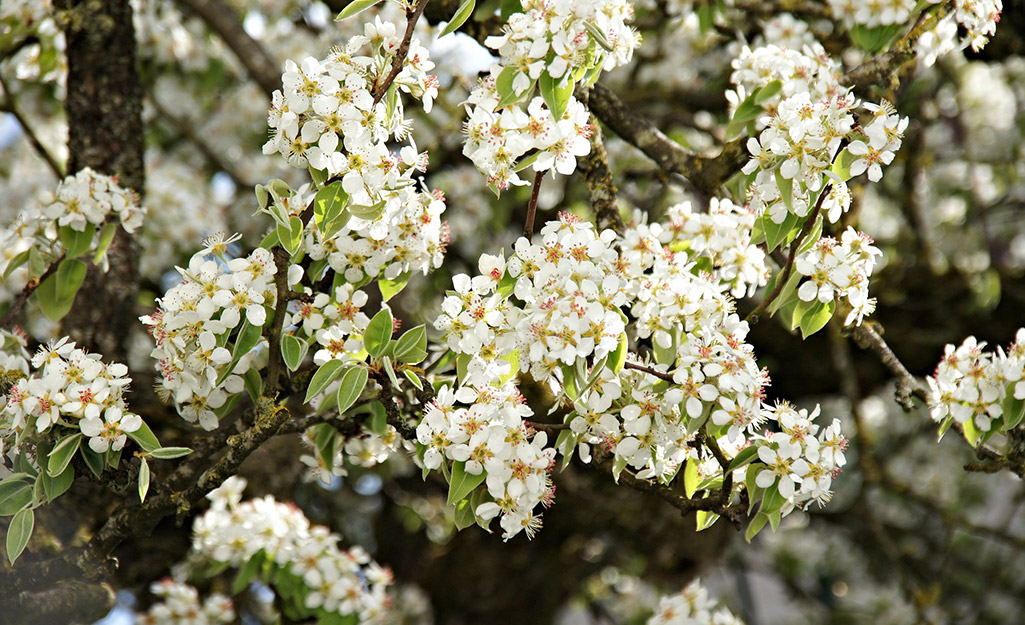
Growing pear trees is easy with just a little knowledge, time and the right tools. Pear trees often need at least three years before they produce fruit. It can take five to seven years to bear a big crop. Pear trees can live for 75 years or more.
Most varieties of pear are self-incompatible. That means they need a neighbor pear tree of a different variety to reproduce. This encourages cross-breeding and the seeds in the fruit of the new cross-pollinated plant have the strengths and weaknesses of both cultivars.
You need at least two cultivars to get most pear trees to produce fruit. Most pear trees will cross-pollinate with each other if you plant types that blossom at the same time of the year.
Some European varieties like Bartlett, Duchess, Comice, Anjou and Kieffer will self-pollinate. But they’ll bear more fruit if planted with another pear tree variety. Some Asian varieties are also self-fruitful, such as Chojuro and Twentieth Century.
Pear trees and many other fruit and nut trees require a cold period to signal it's time for dormancy. During this chill time they set their buds for next year. Without enough chill time, the buds won't open or they open unevenly. Without buds, you won't get blossoms or fruit.
The optimal temperature for chill time is between 45 and 32 degrees Fahrenheit. The chill time depends on the tree: Most require 800–1,000 hours. Asian pear tree varieties require the least amount of time at around 300 hours.
Know your gardening zone and carefully read the label on the tree before purchasing. The chill hours are usually on the label. Your local Cooperative Extension Service can advise on chill hours and fruit trees suited to your region.
Late winter and early spring are the best times to plant pear trees. Plant them in a spot with full sun, good air circulation and well-drained soil. Pear trees prefer deep, fertile soil. They don’t do well in sandy soils.
Standard pear trees often grow 18 to 20 feet tall and 12 feet wide. Plant them 25 to 35 feet apart. Dwarf pear trees usually grow 8 to 10 feet tall and spread to about 7 feet across. Plant them 18 to 20 feet apart. Dwarf pear trees often produce fruit sooner than standard trees.
Tip: The flowers of ornamental pear trees like Bradford are appealing to some people. These trees are considered invasive in some states and may not be legal to plant in your area.
How to Plant a Pear Tree
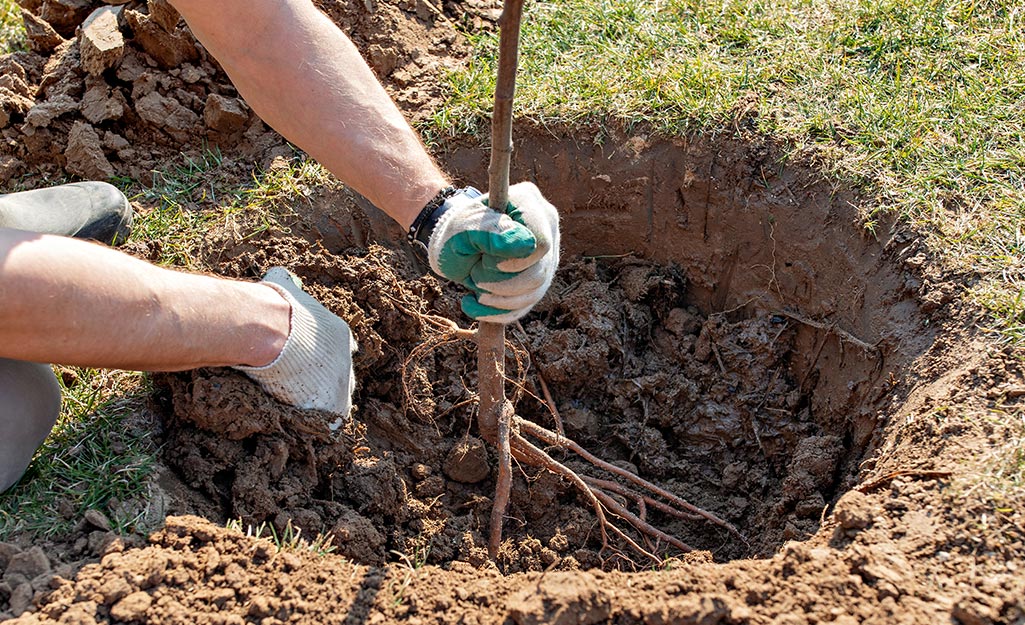
Using a shovel, dig a hole for your pear tree as deep as the root ball. Make the hole twice as wide as the root ball. Remove the tree from its nursery pot or wrapping. Loosen or unwind any roots that are growing in a tight ball.
Look for the spot where the cultivar was attached to the rootstock. This is known as the graft union. It sometimes looks like a line or an injury that has healed. Place the tree in the hole and leave the graft union at least four inches above the soil. Spread the roots in the hole and fill the hole with soil. Gently pat the soil down around the roots and the trunk. Water the tree deeply with a garden hose or soaker hose.
Water at least two times a week in dry weather until the tree becomes established. Mulch around the base of the tree but not touching the trunk. The mulch helps hold moisture in the soil and prevents weeds from popping up. After a few months, cut back to one inch of water per week.
Keep your pear trees moist while they’re flowering and when they start producing fruits. If your soil is fertile, you may not need to fertilize them. If you fertilize, avoid giving them too much nitrogen. High nitrogen in the soil encourages pears to produce leaves instead of fruit.
How to Grow Pear Trees from Seeds
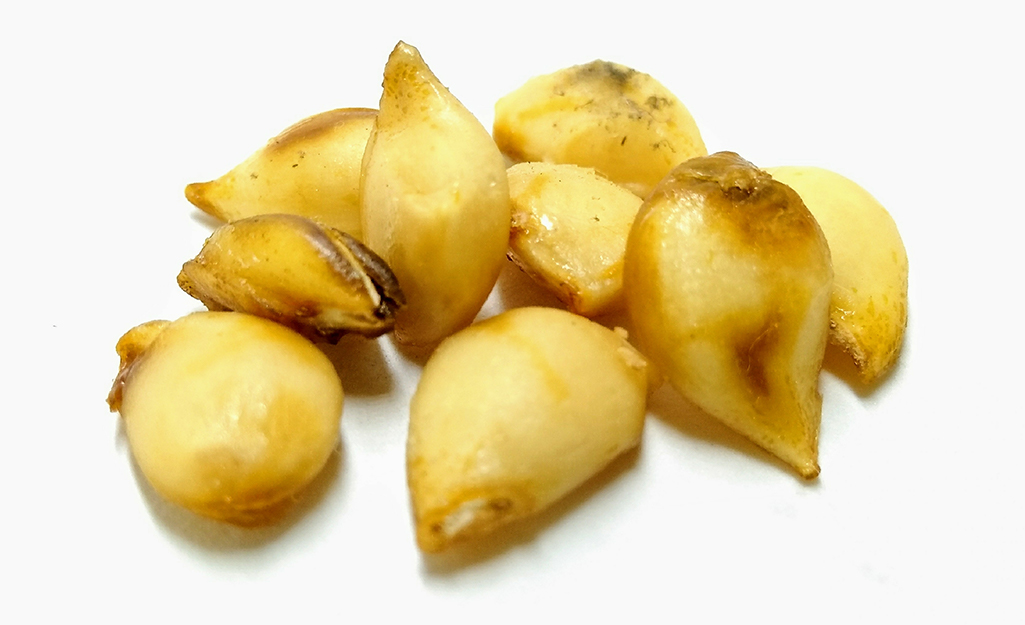
It’s fun to grow a pear tree from seed, but you usually won’t get the same kind of fruit you started with. The tree may not look the same as the parent or produce similar fruit. Sometimes pears grown from seed aren’t even good enough to eat. Unless you’re growing a pear tree as an ornamental or as an experiment, plant a young tree instead.
If you want to try growing a pear tree, start by preparing the seeds for planting:
- Collect seeds from a ripe pear. Drop them into a jar of water and leave them in the water overnight.
- Viable seeds will sink to the bottom. Throw away any seeds that float.
- Put the viable seeds into a solution of one-part bleach to 10-parts water for 10 minutes to help kill any bacteria. Rinse them well.
- Put the seeds in a plastic bag filled with moist peat moss or sand and store them in the refrigerator at a temperature between 32 and 40 degrees Fahrenheit for 60 to 90 days.
To plant the seeds in the ground:
- Till or hoe a spot in your garden about 6 to 8 inches deep.
- Remove any rocks, roots or other debris.
- Make grooves in the soil no more than twice the size of the seeds.
- Drop in the seeds and lightly cover them.
- Water thoroughly but gently. Keep them moist but not wet.
To plant the seed in containers:
- Fill the containers with a sterile germinating medium like coconut coir.
- Plant more seeds than the number of plants you want because not all the seeds will sprout.
- Cover the container with a plastic bag or plastic wrap to help hold in humidity.
- Put the container in bright, indirect light and where the temperature stays 60 to 80 degrees Fahrenheit.
- Remove the plastic when the seeds sprout.
- Move them to a spot with brighter light.
- When the plants are a few inches tall, transplant them to containers filled with regular potting soil.
- Wait until late winter or the spring to transplant them into the garden.
Pear Tree Pruning

Use pruning shears to trim your pear tree for the first time after you plant it. Cut the main stem 33 to 36 inches above the ground if the young tree doesn't have branches yet. If your tree already has branches, cut off any branches that sit less than 18 inches above the ground.
Cut away any branch with less than a 60-degree angle between it and the trunk. If it’s less than 60 degrees, the branch will split away from the tree. A wide angle, or crotch, is better because it’s less likely to break. Wide angles also encourage better air circulation, which can help prevent diseases and let in more sunlight to encourage better fruiting.
It’s best to prune pear trees in late winter before the buds swell. Limit other pruning to light thinning in the spring and summer. Stop pruning after the middle of the summer. Don’t prune more than 20 percent of old growth each year.
Aim to keep the main stem of your pear tree taller than the branches around it. Cut off suckers that sprout from the base at any time of year. Suckers are the small branches that shoot up from the base of the trunk.
Pear Tree Diseases and Pests

Limit the care your pear tree will need by planting a variety that’s recommended for your growing area. Look for varieties that are resistant to plant diseases and pests.
To help prevent problems, rake your garden to remove old fruits and fallen leaves.
The weather can affect how often pear diseases occur or spread. Ask your county extension service agent, who provides education on gardening and agriculture issues, for help if you spot signs of disease on your pear trees. Fire blight is the most common disease among pear and apple trees. Look for cankers on any and all parts of the tree. Sooty blotch is also common and looks like black smudges on the skin of the fruit.
Keep an eye on your trees and act fast if you spot insect pests like aphids, mites and caterpillars. Dormant oil sprayed on trees in the winter can control some infestations.
Use a plant and garden insect control product designed specifically for your problem rather than a broad-based product. Be sure it’s safe for use on edibles if you plan to eat the pears.
Harvesting and Storing Pears
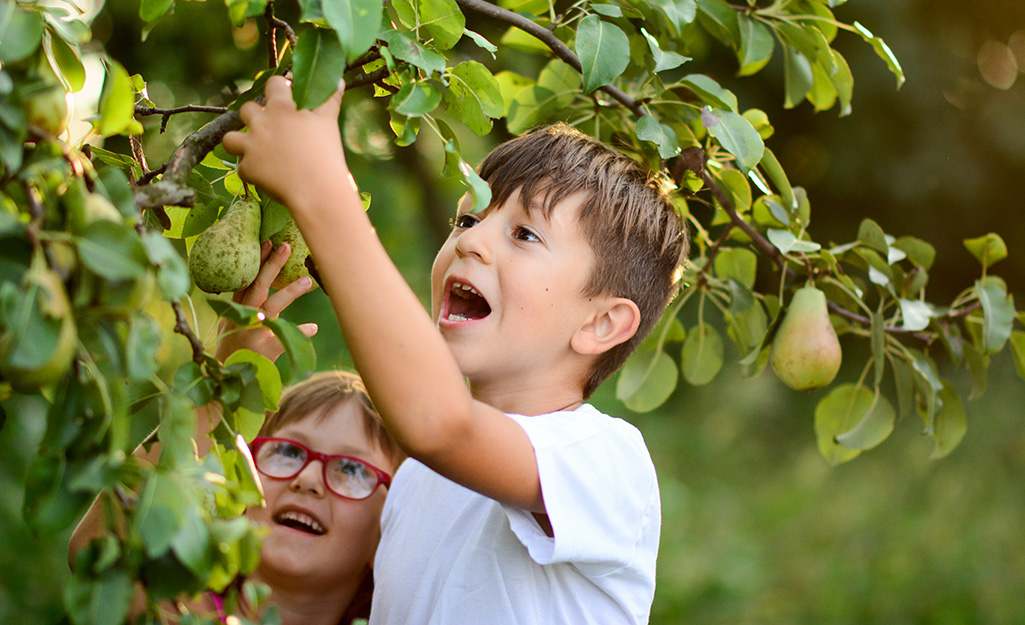
Harvesting and storing pears is easy and rewarding if you follow these tips:
- Harvest pears when they are firm but not ripe. Pears ripened on the stem are coarse and mushy.
- Early blooming varieties are ready up to a month earlier than later varieties
- Tip the fruit away from the stem. If it comes off easily, it is ready for harvest.
- Leave the fruit that doesn’t come off easily
- Collect the picked fruit in a towel-lined basket or container to keep them from bruising
- Bring the pears indoors and chill them at 30 degrees Fahrenheit to help the ripening process
- Different varieties require different chill-off hours. Minimum chill-off hours range from 200-800.
- Remove from the cold and leave the pears on the counter in a paper bag to finish the ripening process
- Store pears in the fridge for up to two months
Plant fruit-bearing pear trees in your yard for good looks and tasty fruit. When you're ready to plant tree, The Home Depot can deliver online orders when and where you need them.

